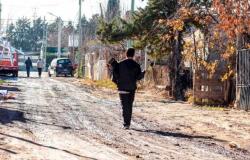The history of San Juann look from the political perspective is what exposes the Mr. Elio Noé Salcedo in his work San Juan, its history, from the foundation to the second reconstruction which covers from 1,562 to 2,015, that is, 400 years of provincial life.
Salcedo explains that it ends there because in that year he finished writing it and a stage of provincial political life also ended with the end of his term as governor of Jose Luis Gioja and the beginning of Sergio Uñac.
“The structure of the book is in three parts. One goes from the founding of San Juan to the time of the General Nazario Benavides. That is from 1562 to 1862 practically, although Benavides was assassinated in 1858. But in some way I extend his time until 1862, which is when he became governor. Sarmientoat the time of Miter. The second part is from the governorship of Sarmiento to the advent of the Cantonism. That is, 1862 to 1923. And the third would be from the era of cantonism to the second reconstruction of San Juan, 1923-2015,” he summarizes.
Regarding the development of his work, he confides that “I actually wanted to make a brief history of Saint John, a breviary. I started to work, and when I wanted to remember a breviary I didn’t have much. It took me a few months and I became more enthusiastic.”
He reveals that “he had the motivation of a historian of Córdoba, the Dr. Roberto Aquiles Ferrerowho is the son of the San Juan man’s brother Froilan Ferreroname that today bears the Pocit Secondary Schooleither”.
The motivation was that “he encouraged me to write because he said that there is no history written since that time.” federal and national visionthat relates national history with provincial history and vice versa, and even with latin american history“.
He warns that “that is a bit imprint that the book has. That is why this difference from the other stories that exist, which are four: The History of the Country of Cuyo, by Nicanor Larraín; that of Horacio Videla; that of Héctor Arias and Carmen Peñalosa from Varese, and that of “Chango Illanes. This would be a fifth, perhaps, with some difference in the sense that it is intended, not only for the vision and the approach, for it to be a story that children, adolescents, young people read. That is why the idea is important. This is that history is actually the politics of the past. And that today’s politics will be the history of tomorrow, of the future,” he concludes.






